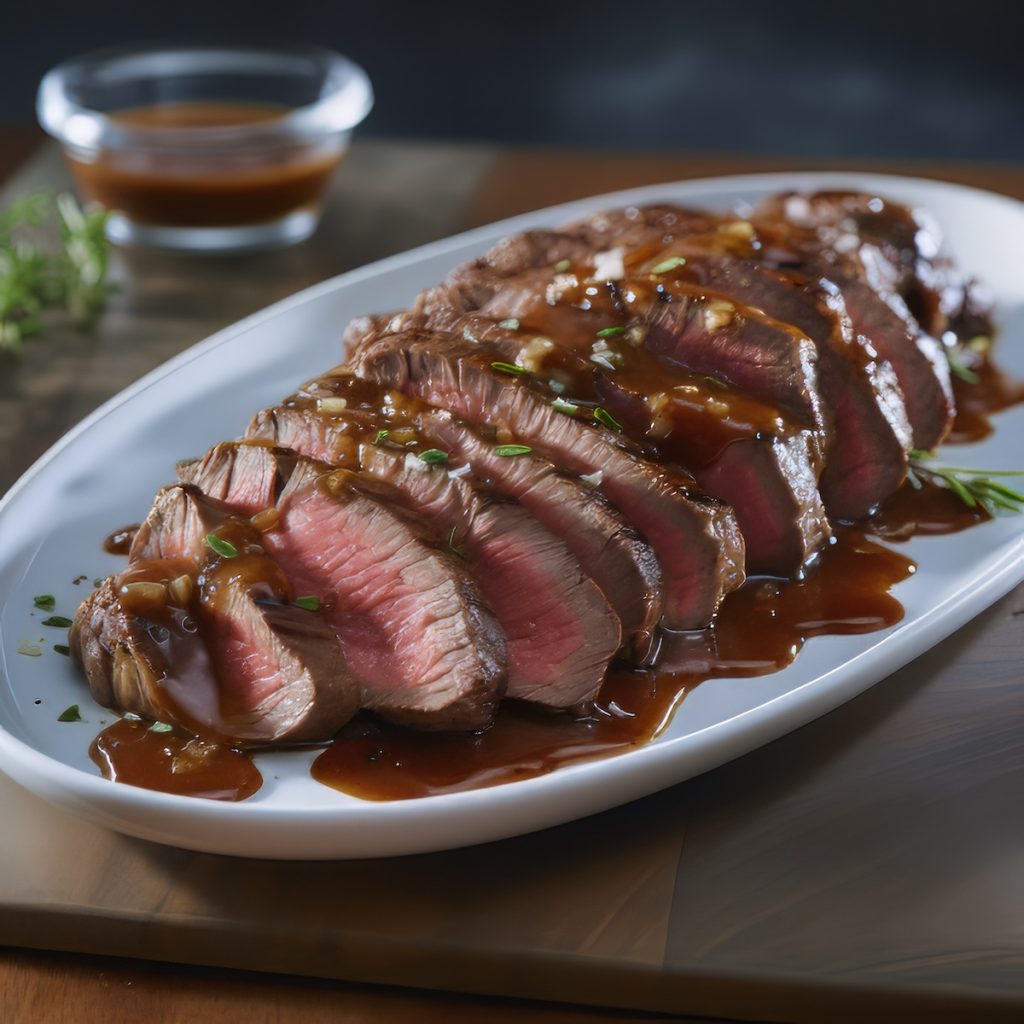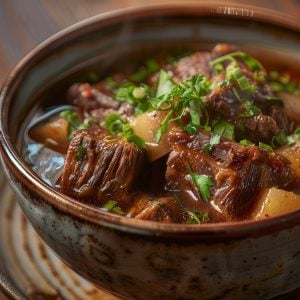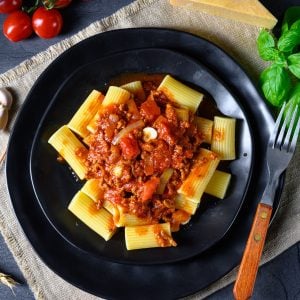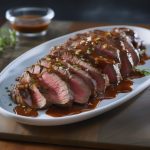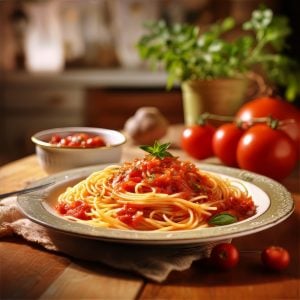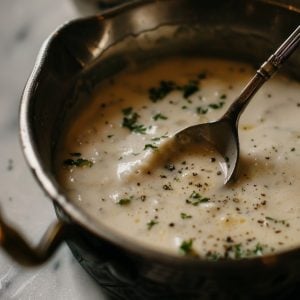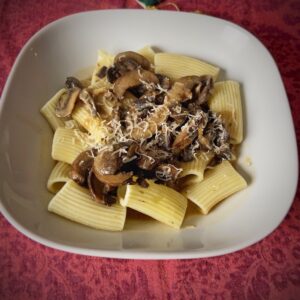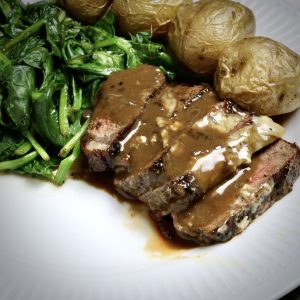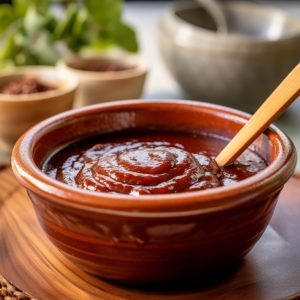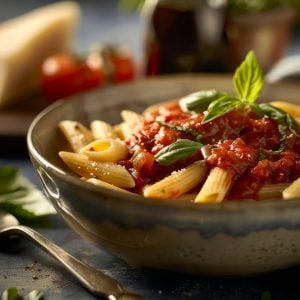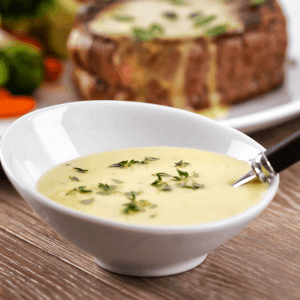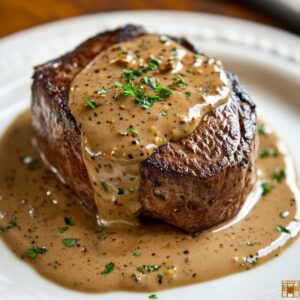How to Make a Restaurant Quality Espagnole Sauce
Espagnole sauce, also known as brown sauce, is one of the classic mother sauces in French cuisine. It is a rich and flavorful sauce that serves as the base for many other derivative sauces. Espagnole sauce is known for its deep brown color and is typically used to enhance the flavor of meat dishes.
Brown sauce is one of French cuisine’s five “Grand” or “Mother” sauces, the other four being béchamel, tomato, velouté and hollandaise. A Grand sauce is a base sauce from which many derivative sauces are made.
Brown sauce, as the name implies, is a brown-colored sauce made from beef or veal stock, which is viscous and deeply flavored by meat and aromatic vegetables. Brown sauce is also known as Espagnole, the French word for Spanish. It is a hearty sauce best served with hearty fare and robust red wines.
Ingredients
Butter is a dairy product made from the fat and protein components of milk or cream. It is produced by churning or agitating the cream, causing the fat globules to separate from the liquid, known as buttermilk. The remaining solid fat is then further processed and may be salted or left unsalted, depending on the desired end product.
Veal stock is a rich and flavorful liquid obtained by simmering veal bones with vegetables, aromatics, and sometimes herbs. It serves as a foundational ingredient in classic culinary preparations, especially in French cuisine. Veal stock is renowned for its deep, savory taste, and it is used as a base for sauces, soups, and stews.
Tomato puree is a thick and smooth consistency product made from cooked and strained tomatoes. It is a versatile ingredient used in a variety of culinary applications to add the concentrated flavor of tomatoes to dishes. Tomato puree is different from tomato sauce in that it is typically made from tomatoes without additional seasonings or ingredients.
A sachet d’épices (pronounced sah-shay day-pees) is a small bag or pouch containing a selection of herbs and spices tied together. The term is French, and it translates to “bag of spices” in English. The sachet d’épices is used as a seasoning bundle to infuse flavors into soups, stocks, sauces, and other culinary preparations. It allows the convenient addition of aromatic elements to a dish without the need for individual herbs and spices that would later need to be strained out.
All-purpose flour is a versatile type of wheat flour that is commonly used in a wide range of culinary applications. It is a staple ingredient in many kitchens and is known for its moderate protein content, which makes it suitable for various cooking and baking purposes. All-purpose flour is made from a blend of hard and soft wheat, and it is milled to a consistency that balances protein content for general use.
Preparation
The preparation of Espagnole sauce involves several steps. It starts with making a brown roux by cooking flour and fat until it achieves a deep brown color. The mirepoix is then added and cooked until the vegetables are softened. Tomato paste or fresh tomatoes are incorporated, followed by the addition of brown stock and the bouquet garni. The sauce is simmered and reduced to achieve its desired consistency and flavor.
Color and Flavor
The brown color of Espagnole sauce comes from the browned roux and the addition of tomatoes. The sauce has a rich and savory flavor with a subtle sweetness from the tomatoes.
Derivative Sauces
Espagnole sauce serves as the base for several derivative sauces, including demi-glace. Demi-glace is made by further reducing Espagnole sauce and adding more brown stock, resulting in a highly concentrated and flavorful sauce. Other sauces, such as Bordelaise, Chasseur, and Robert, can be created by adding specific ingredients to Espagnole sauce.
Culinary Uses
Espagnole sauce is traditionally used to accompany red meats, such as beef or lamb. It can be served as a sauce over grilled or roasted meats or used as a component in more complex dishes.
Storage
Like many sauces, Espagnole sauce can be made in advance and stored for later use. It can be refrigerated for a few days or frozen for longer storage.
While Espagnole sauce requires some time and effort to prepare, its versatility and the range of derivative sauces it can create make it an essential component in classic French cuisine. The depth of flavor it adds to dishes contributes to the richness and complexity of many meat-based sauces.
Espagnole Sauce or Brown Sauce
Ingredients
- 2 ounces butter
- 2 ounces all purpose flour
- 2 quarts veal/beef stock
- 4 ounces tomato puree
- 1 small carrot roughly chopped
- 1 stick celery roughly chopped
- 1 small onion roughly chopped
- 1 sachet d’epices
Instructions
- Melt the butter over medium heat in a small stockpot. Add the flour and cook, stirring frequently, until a golden color is achieved.
- Slowly add the stock, constantly whisking until it is incorporated.
- Add remaining ingredients.
- Bring the sauce to a gentle simmer and cook for at least one hour, skimming the surface as necessary.
- Strain through cheesecloth when finished.

